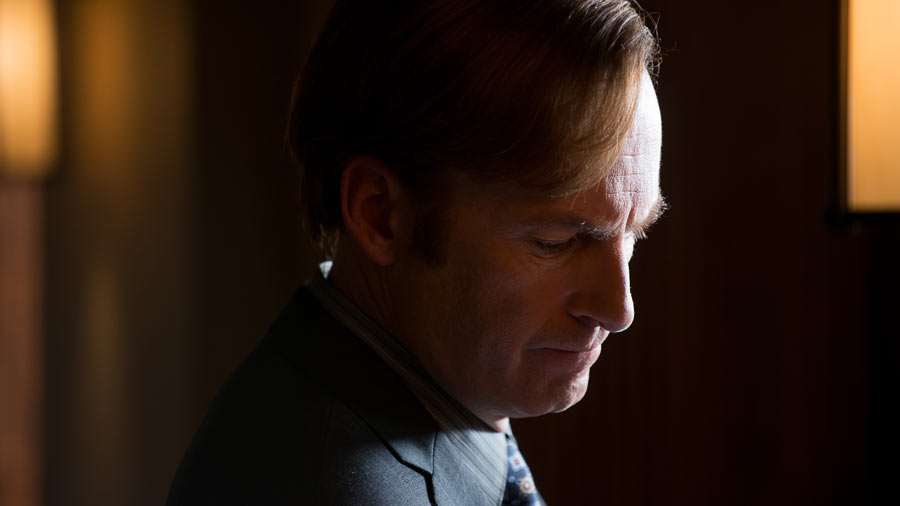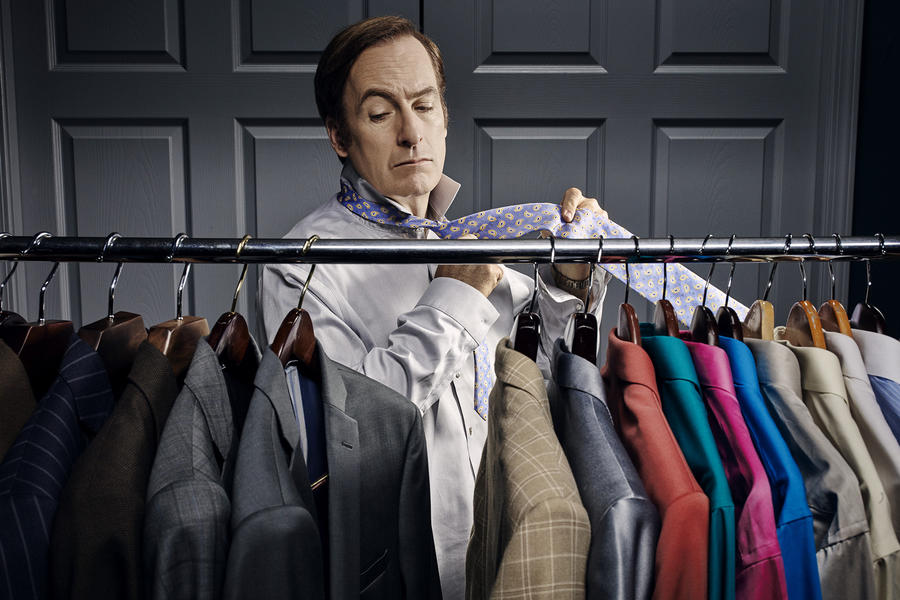How long should it take for “Better Call Saul” to transform Jimmy into Saul Goodman?
Quick Answer: The pacing of Better Call Saul is aptly suited to the story it is telling—the decline of a man once determined to be a top lawyer who slides into the slimy underbelly of law practice. The series is a character study and a morality play, and within those lines, should draw out the creation of Saul Goodman. Once it reaches that point, it has told its story.
When Better Call Saul (2015 - ) was first announced as a concept, fans were immediately eager to see how a relatively regular man named James McGill would manage to transform into Saul Goodman, the charismatic fan favorite scumbag lawyer from Breaking Bad (2008 - 2013). Now, a few seasons into the story, we’ve been treated to a narrative that slowly informs us of the nature of Jimmy’s (Bob Odenkirk) gradual transition from lawyer to criminal lawyer. We witness a man whose world stacks everything against him and whose will is weak to resist the urge to bend the rules. It’s clear that Jimmy McGill didn’t set out with the intent of becoming Saul Goodman, but with each passing episode, we discover more about the foundation of the future we know to be inevitable.
With that, there exists a constant wonder as to how long the series will take for Jimmy to go “full Saul.” Is it going to be a long and tumultuous process, not finalizing the transformation until the very end? Or will something soon snap in Jimmy’s psyche that kicks him into Saul mode in one fell swoop, slicing the series into two halves—one witnessing the late days of Jimmy McGill, and one illuminating the first years of Saul Goodman? After all, the show is called Better Call Saul. We have to meet that person eventually.

Bob Odenkirk in Better Call Saul
Viewers have a natural desire to see Jimmy’s world come crashing down. Not because he’s that awful of a person or because we can’t sympathize with the challenges he faces, but because we know it’s going to happen. The show’s greatest challenge and its greatest strength both stem from the fact we know the ending. That foreknowledge both builds the drama of the series and informs its pace. We see the inklings of Saul’s charisma and charm in Jimmy’s character without him taking us all the way there. We see him smooth talking everyone he is contact with, we see him hire film students to produce low-budget commercials, we see him fudging documents—these are all trademarks of Saul in their junior stages. We witness more of these motions in Season Two than in Season One, pushing the de-evolution ever so gradually towards its destination.
The thing is, as a character study and a morality play, Better Call Saul should take a decent amount of time sending Jimmy past the point of no return. Since the dramatic weight of the series relies on our knowledge of the future to build tension, once we reach the point of no return, it has fulfilled its purpose. Vince Gilligan and Peter Gould use Better Call Saul as a way of showcasing multiple characters, not just Jimmy, through different colored lenses of morality. Chuck (Michael McKean) can be just as awful a person as his brother. Kim (Rhea Seehorn) wants to play by the rules but can’t resist the charm of occasionally being bad. Mike (Jonathan Banks) is a person who has spent his life crushed by the gravity of his own actions, regularly doing bad deeds, but is a solid and loving person at heart. The series explores all these characters and challenges us as viewers to analyze their behaviors, putting us at odds with how we view and interpret the things they do. Once Jimmy becomes Saul, we know what he does and how he lives. That character’s story already exists. It will certainly be fun to see his beginning, to watch the early days of him acquiring his strip mall law office and wallpapering the place with the Constitution, but doing so also signals the end of Jimmy McGill’s tale.
A man deciding to sell his soul in exchange for profit should be a laborious decision. We’re witnessing a man contemplating making that choice. When he does, he will almost surely snap right into it—but he has to reach a point where becoming Saul seems the only solution to his life of problems.

Bob Odenkirk in Better Call Saul
When EW asked Bob Odenkirk how close we are to seeing the transformation following the season two finale, Odenkirk said, “Well, that you’d have to ask Vince and Peter for a definitive answer, but I do think we’re close. The thing you have to remember is everything I say is conjecture. I really don’t know, but… I think the journey from Jimmy McGill to Saul is like falling off a cliff. At a certain point, it’s not a gradual thing at all, so when people ask, ‘How long will it take?’ I think that it’ll take a day. It’ll be one day where he goes, ‘Okay, that’s it. I’m going to be one of those lawyers, and the reasons for that are numerous.’ You can imagine numerous reasons, one probably being I could embarrass the hell of out my brother….. I think people sometimes feel like it’s going to take forever at this pace, and I just don’t think that’s true. It’s more a matter of building up the building blocks and then they all fall down in one fell swoop.”
Saul Goodman is important. He is a caricature of everything Chuck hates in a lawyer, an exaggeration of Jimmy’s natural self, and the opposite of the altruistic, decent person at the core of the character. Seeing that play out is the purpose of the series, so it will be interesting to see how everything comes together. Saul Goodman is the superhero version of Jimmy McGill, and putting on that cape is a transformation—a burden—and it won’t happen until he’s well ready.

